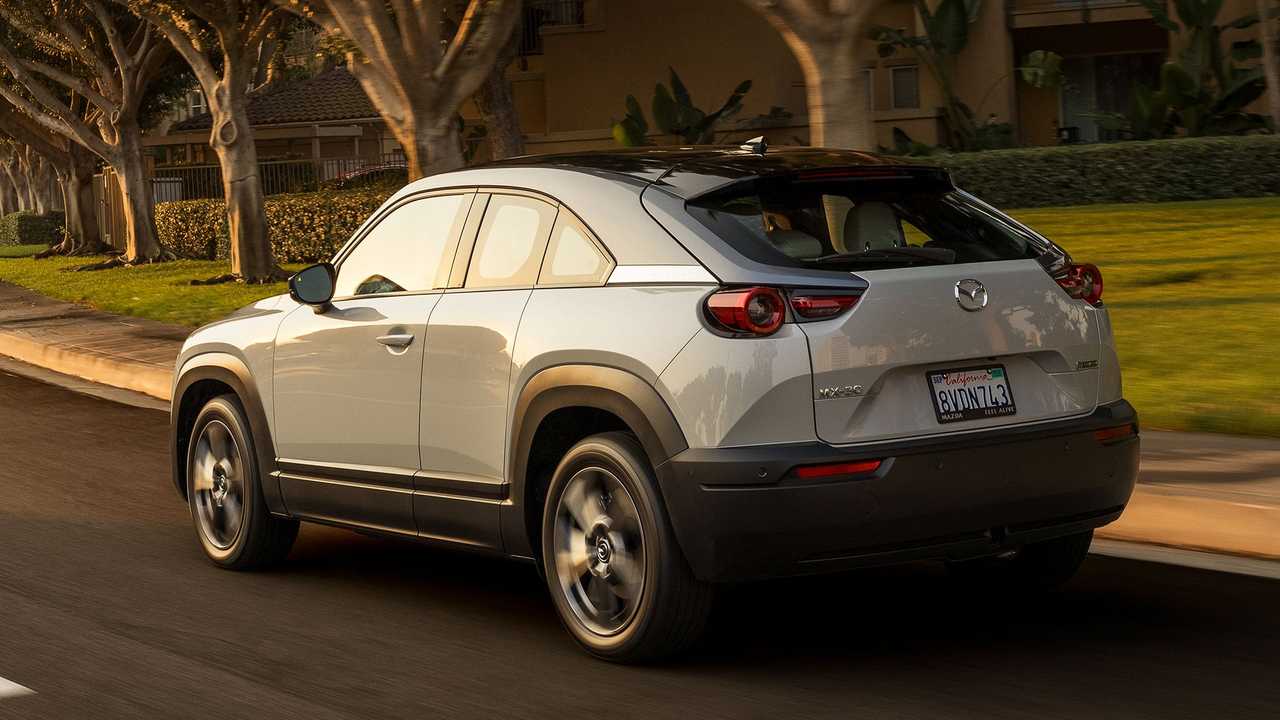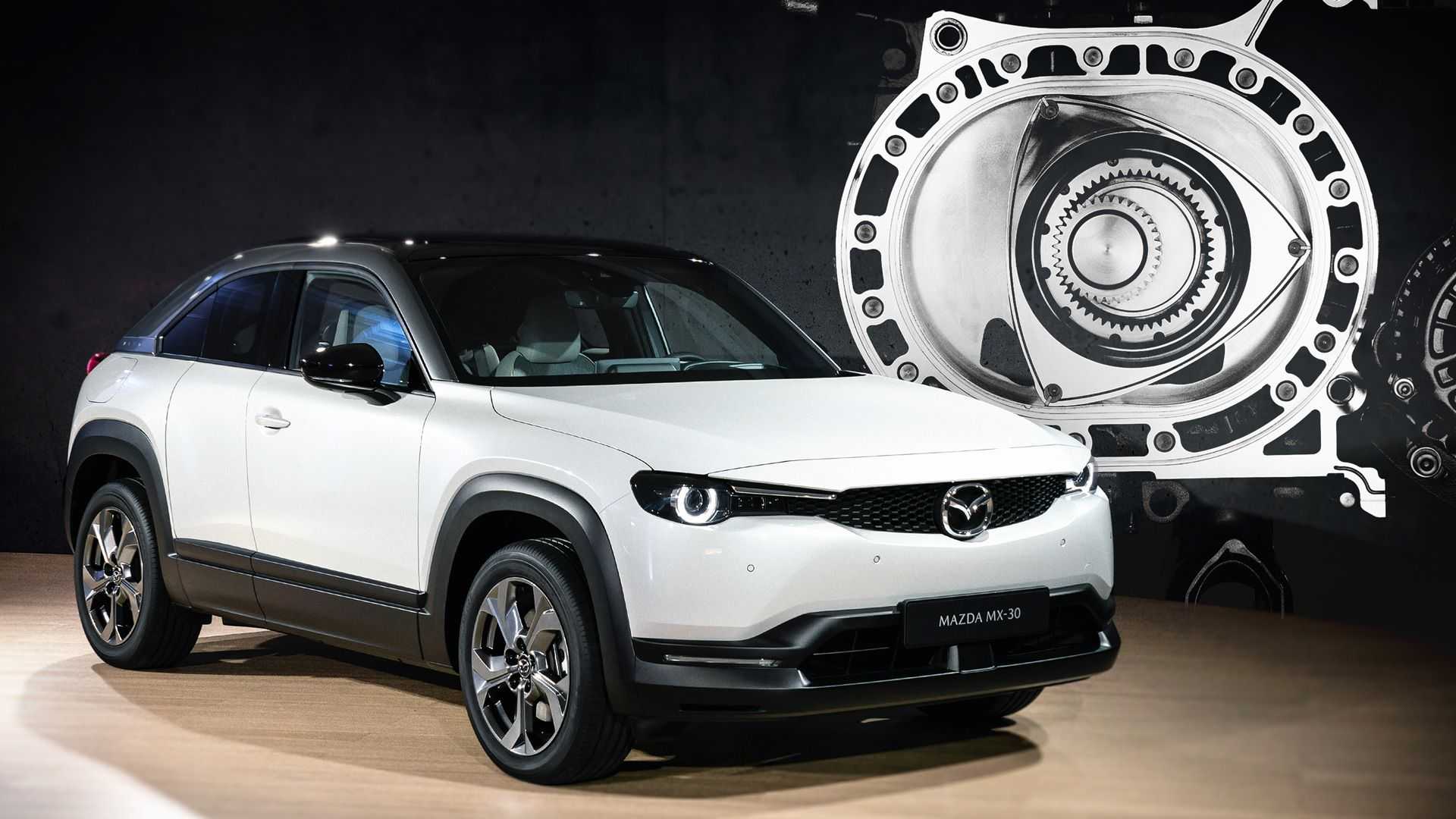
The rotary engine returns as a range extender.
After years of waiting and rumors, Mazda finally revives the rotary. The MX-30 R-EV with a Wankel engine as a range extender debuts at the Brussels Motor Show on January 13, 2023.
Don’t get this confused with a revived RX-7, though. The rotary engine operates at a constant speed to serve as a range extender for recharging the battery. Mazda positions the solution as having the benefits of an electric drivetrain but with the range of a combustion powerplant.
Range is a weakness of the existing MX-30 EV. Its 35.5 kilowatt-hour battery offers an EPA-estimated range of 100 miles (161 kilometers).
The MX-30 uses a single electric motor making 144 horsepower (107 kilowatts) and 200 pound-feet (271 Newton-meters). Acceleration to 60 miles per hour (96 kilometers per hour) requires 9.6 seconds.
The displacement of the rotary engine in the MX-30 R-EV isn’t yet available. It’s also not clear whether Mazda would increase the electric motor’s output to offset the weight of the additional engine.
In 2020, Mazda said an MX-30 with a rotary range extender was under consideration. The company made the plan official later that year. As of 2021, the automaker intended to offer this variant of the EV in the US.
Mazda and the Wankel engine have a close relationship. The company originally licensed the tech from NSU, and engineers at the Japanese firm worked to improve the powerplant. The Cosmo debuted at the 1964 Tokyo Motor Show as the premiere of the rotary-powered Mazda. Full production didn’t begin until 1967. Models like the RX-3 and RX-7 made the rotary more accessible.
However, the fuel consumption and exhaust emissions of the rotary remained sticking points throughout the engine’s life. These factors were among the reasons why the RX-8, the last Wankel car to date available to customers from Mazda, went away in 2012.
Mazda’s engineers never gave up on the rotary, though. We have seen a variety of patents and heard rumors about the Wankel’s continued development over the years.






